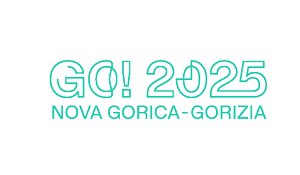In MtF gender reassignment surgeries, a lot of attention is given to the aesthetic appearance of the external genitals (vulva) and vagina. Poor consideration is given to the only organ whose sole function is pleasure: the clitoris.
Could this be the result of a cis-hetero-masculine dominant system where non-normative pleasure is neglected? Where the only possible and useful sex is the penetrative one?
With this work, inspired by the transfeminist theories of Paul B. Preciado, we intend to challenge the medical and biotechnology fields to answer these questions and explain why there is still so little research on this topic. In 2000, Preciado first criticized the lack of regenerative medicine research on the clitoris; today, in 2024, the clitoris remains one of the human organs that has never been fully engineered.
During my PhD studies in Bioengineering, I have focused on the 3D-bioprinting of electrically active tissues and organs, especially the nervous system, and how to evoke tissue response through stimuli-responsive biomaterials.
In this work, together with the Brazilian tattoo artist Isadora Regis (Kisartemisia), I have engineered a tattoo bioink with electroconductive polymers and piezoelectric nanoparticles: when stimulated by ultrasounds, the nanoparticles respond by generating electrical signals which propagate through the conductive polymer matrix, thus stimulating and activating the sensory nerve fibers with a wireless and electrode-free approach.
In this way, by simply coupling the tattoo with an ultrasound-based vibrator (commercially available), we aim to reproduce the essential function of the clitoris and give everyone the possibility to feel or enhance the feeling of a clitoral orgasm.
Our goal is to transcend the conventional boundaries of tissue engineering, breaking the silence and stigma surrounding the clitoris, advocating for a future where sexual pleasure is recognized and valued as a fundamental human right for all.
Laura Sordini is a fourth-year PhD student in Bioengineering – Cell Therapies and Regenerative Medicine, at Instituto Superior Tecnico, Lisbon, Portugal. Her work always focused on the regeneration of the human nervous tissue, through the use of biomaterials, smart conductive polymers, 3D-bioprinting technique, and electrical stimuli. In particular, her PhD is focused on the delivery of electrical signals in a wireless mode, without the use of invasive electrodes, for the stimulation and differentiation of stem cells into neural tissue.
Nowadays, her academic research has been "contaminated" by artistic practices, biohacking tools, transhackfeminism, and withcraft. After completing a course in Neuroscience and Art, she transitioned from regenerative medicine to regenerative cultures, regenerative design, regenerative thinking.
She is currently involved in a transfeminist collective working at the intersection between education and artistic practice, to challenge the sexist, patriarcal, colonialist and racist root of gynecology.
The collaboration between the tattoo artist and friend Isadora Regis resulted in a fusion of millennia-old body art modification practice, tattooing, with cutting-edge technology from the bioengineering field, aiming to expand the worlwide access to pleasure as a human right.
Kisa is a multidisciplinary artist from the Brazilian Amazon, currently living and working in Lisbon, Portugal. Her work spans across tattooing, illustration, muralism, and art education. Her signature as an artist, regardless of the method, is the use of a counter-colonial perspective, questioning the power structures that disconnect human beings from their roots, the land, and their bodies.
In her artistic interventions, Kisa seeks to reverse the logic of colonization by creating characters that live in symbiosis with the earth, reconnecting with their bodies and reclaiming symbols to strengthen their identities.
For Kisa, tattooing is an ancestral cultural manifestation that connects us to our bodies—whether to exalt, affirm identities, or reclaim symbols. For her, it is a transformative process that directly engages with the practices of bioengineering, establishing a convergence between bodies and modifications.
It is from this fusion that her collaboration with bioengineer Laura Sordini emerges—an audacious partnership that seeks to unite tattooing and pleasure in an innovative way, exploring new possibilities for body modification and expression.
Back








